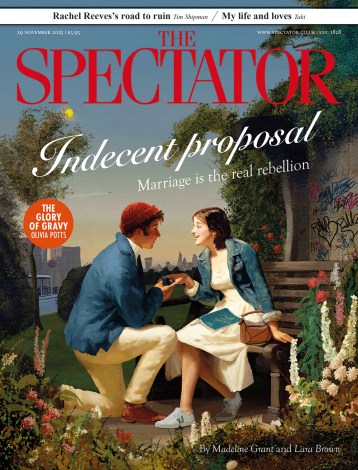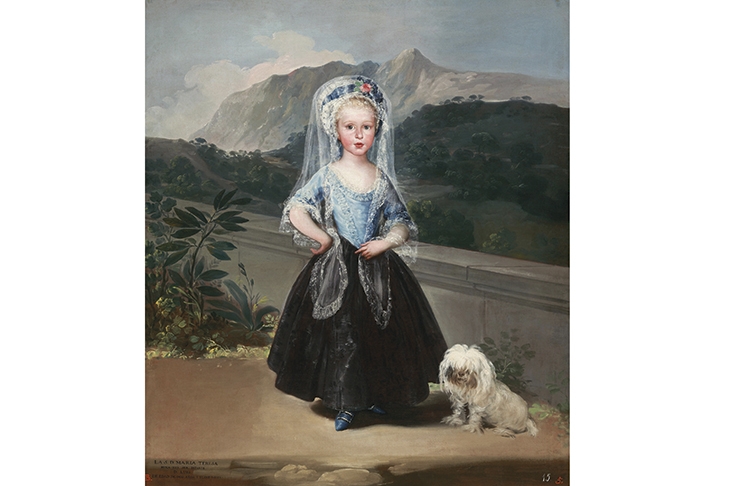The great Spanish artist Francisco Goya was born in Zaragoza in 1746, the son of a gilder whose livelihood was doomed by the new fashion for marble. The young Goya first studied in his home town before graduating to Madrid, rising through academy and court circles and navigating his way through the reigns of three Bourbon kings and the intervening rule of Joseph Bonaparte before retiring to Bordeaux in his late seventies.
From early commissions for religious frescoes, altarpieces and tapestry cartoons for royal palaces, he went on to paint celebrations of everyday Spain en fête and to establish a portrait practice encompassing all the leading figures of the wildly fluctuating political scene in the capital.
As his fortunes rose, his creativity broadened in both technique and subject matter. Drawing and painting were supplemented by etching, lithography and miniature-painting, light-hearted social scenes joined by reflections of a very different kind. Goya the successful courtier became the witness for all time to the savagery and inhumanity visited on Spain by years of war and destitution.
Goya’s ‘black paintings’ of devils and giants were his ‘visual metaphor for the underside of the enlightenment’
It is a complex story that Janis Tomlinson has to tell, but the armature for Goya’s life is provided by an astonishing wealth of scholarship. Though a raft of letters from Goya to his close friend Martin Zapater gives us the artist’s own voice, to the nth degree, she has brought to bear accounts of every real Goya spent, earned or was owed, every investment made, property bought and advertisement placed, every letter, will, contract, diary entry or official paperto tell this life with a meticulous attention to detail.
Tomlinson rather engagingly reveals that she was advised to ‘lighten up’ in her approach; but if all this detail sometimes threatens to swamp the narrative line, it establishes an air of authority ultimately impossible to resist. It also throws up fascinating sidelines: the capture in 1799, for instance, of the British ship Westmoreland, en route from Italy to France and impounded in Malaga with a cargo of art. As a result, Pompeo Batoni’s portraits of the Baron of Dunstanville and the Viscount of Lewisham were hung in the antechamber to the bedroom of Spain’s secretary of state. And, more pertinent to our own times perhaps, the fact that anyone attempting to escape from an outbreak of yellow fever in an Andalucian village in October 1800 attracted a penalty of 200 lashes and ten years in prison.
It does feel, however, that some of the more intimate aspects of Goya’s life lie beyond scholarship. Six of his seven children died young, but the mere fact is all we learn. We know very little of his wife and almost nothing of how a long-standing feud with his artist brother-in-law affected family life. But we do know, as the letters tell us, how close, bordering on fanatical, Goya’s friendship was with Zapater. We know how he enjoyed new-found wealth to buy a sporty carriage, crashed it, and bought two mules instead. We know that he insisted the only miniature artist he rated be released from prison to copy his portraits. We know how dreadfully the loss of his hearing affected him after his illness of 1793. We know that he painted portraits of royalists, constitutionalists and Bonapartists alike — he even painted a portrait of Wellington on top of one of Joseph Bonaparte. And we know that he could be irascible, and that domestic life was sometimes rocky when, as a widower in his last years, he lived in Bordeaux with Leocadia Weiss and her two children. But whether it is actually possible to get to know Goya is another matter.
Where the author excels — and after all this is what matters — is in discussing the work. Of Goya’s portraits she writes that ‘naturalism and flattery are held in perfect balance’, and a masterly description of ‘The Family of Carlos IV’, a huge work painted at a moment when Bourbon Spain and Napoleonic France were at peace, brilliantly makes her point:
Working with brushes of various sizes, Goya captured light reflected by the brocade trim of women’s skirts, the silver and gold of their overskirts, the medals on the king’s chest, the diamonds of the queen’s pendant earrings… all details that would sparkle when the portrait was originally seen by the light of oil lamps or candles.
Good as she is on the shimmer and magic of oil paint, she is equally adept at interpreting for us the darker world of Goya’s etchings and lithographs, his ‘visual metaphor’, as she puts it, ‘for the underside of the enlightenment’. She is down to earth about the so-called (in the 20th century) black paintings that decorated the walls of Goya’s country retreat, locating the devils and giants in a long-standing tradition of phantasmagoria, and pointing out that the experience of seeing them in Goya’s house (demolished in 1909) would have been very different from that of viewing them today, ‘restored’, re-sized and framed on a gallery wall.
Many of Goya’s works are part of our common visual language, none more so perhaps than the ‘Naked and Clothed Maja’. Tomlinson mentions early accounts of the paintings that suggest either that the naked version was on the verso of the clothed, or that there was a mechanism that raised the clothed version to reveal the naked beneath. Both were assumed to hang in a private cabinet in the house of one of Goya’s most powerful patrons, the ‘Prince of Peace’, Manuel Godoy. The story of his rise to power and his family’s connection to the artist alone would make the subject of another book. His wife, Maria Teresa de Borbón y Vallabriga, the oldest daughter of the Infante Don Luis, was painted by Goya as a toddler and again as a vivacious little girl in a family portrait. She reappears as a pregnant young woman, now the ‘Princess of Peace’, in a captivatingly fey portrait of 1800.
‘With Goya there will always be more to learn,’ says Tomlinson in summing up her new biography of the artist. A modest thought from a writer who has produced the ne plus ultra on the subject for our generation, because this book is a must for anyone seriously interested in Goya. For the ordinary reader it may feel as though the man himself remains hard to pin down, but look at the self-portraits, look, in fact, at all the illustrations and it’s impossible not to want to hotfoot it to the Prado. If only.






Comments